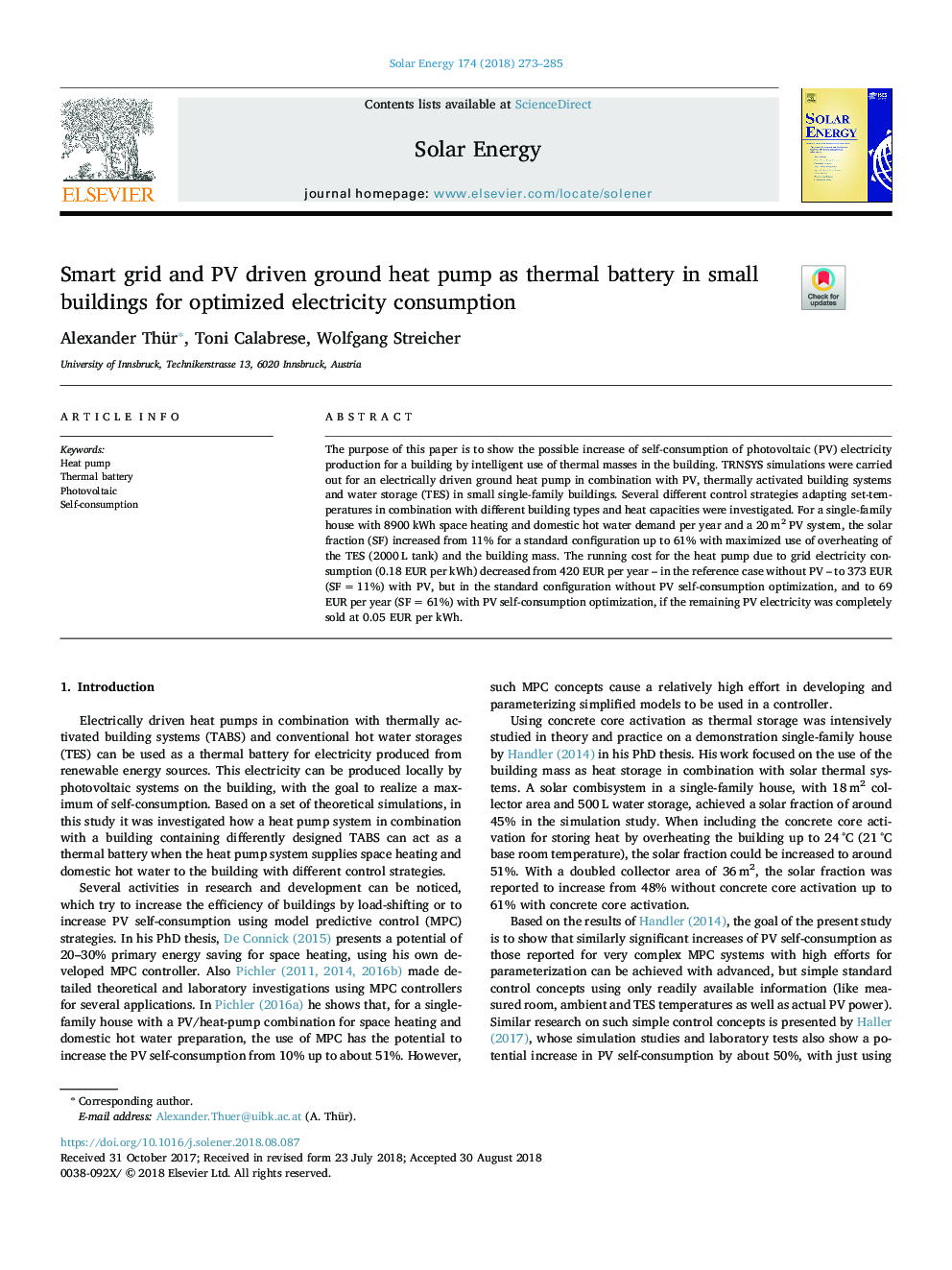| Article ID | Journal | Published Year | Pages | File Type |
|---|---|---|---|---|
| 10141950 | Solar Energy | 2018 | 13 Pages |
Abstract
The purpose of this paper is to show the possible increase of self-consumption of photovoltaic (PV) electricity production for a building by intelligent use of thermal masses in the building. TRNSYS simulations were carried out for an electrically driven ground heat pump in combination with PV, thermally activated building systems and water storage (TES) in small single-family buildings. Several different control strategies adapting set-temperatures in combination with different building types and heat capacities were investigated. For a single-family house with 8900â¯kWh space heating and domestic hot water demand per year and a 20â¯m2 PV system, the solar fraction (SF) increased from 11% for a standard configuration up to 61% with maximized use of overheating of the TES (2000â¯L tank) and the building mass. The running cost for the heat pump due to grid electricity consumption (0.18 EUR per kWh) decreased from 420 EUR per year - in the reference case without PV - to 373 EUR (SFâ¯=â¯11%) with PV, but in the standard configuration without PV self-consumption optimization, and to 69 EUR per year (SFâ¯=â¯61%) with PV self-consumption optimization, if the remaining PV electricity was completely sold at 0.05 EUR per kWh.
Related Topics
Physical Sciences and Engineering
Energy
Renewable Energy, Sustainability and the Environment
Authors
Alexander Thür, Toni Calabrese, Wolfgang Streicher,
